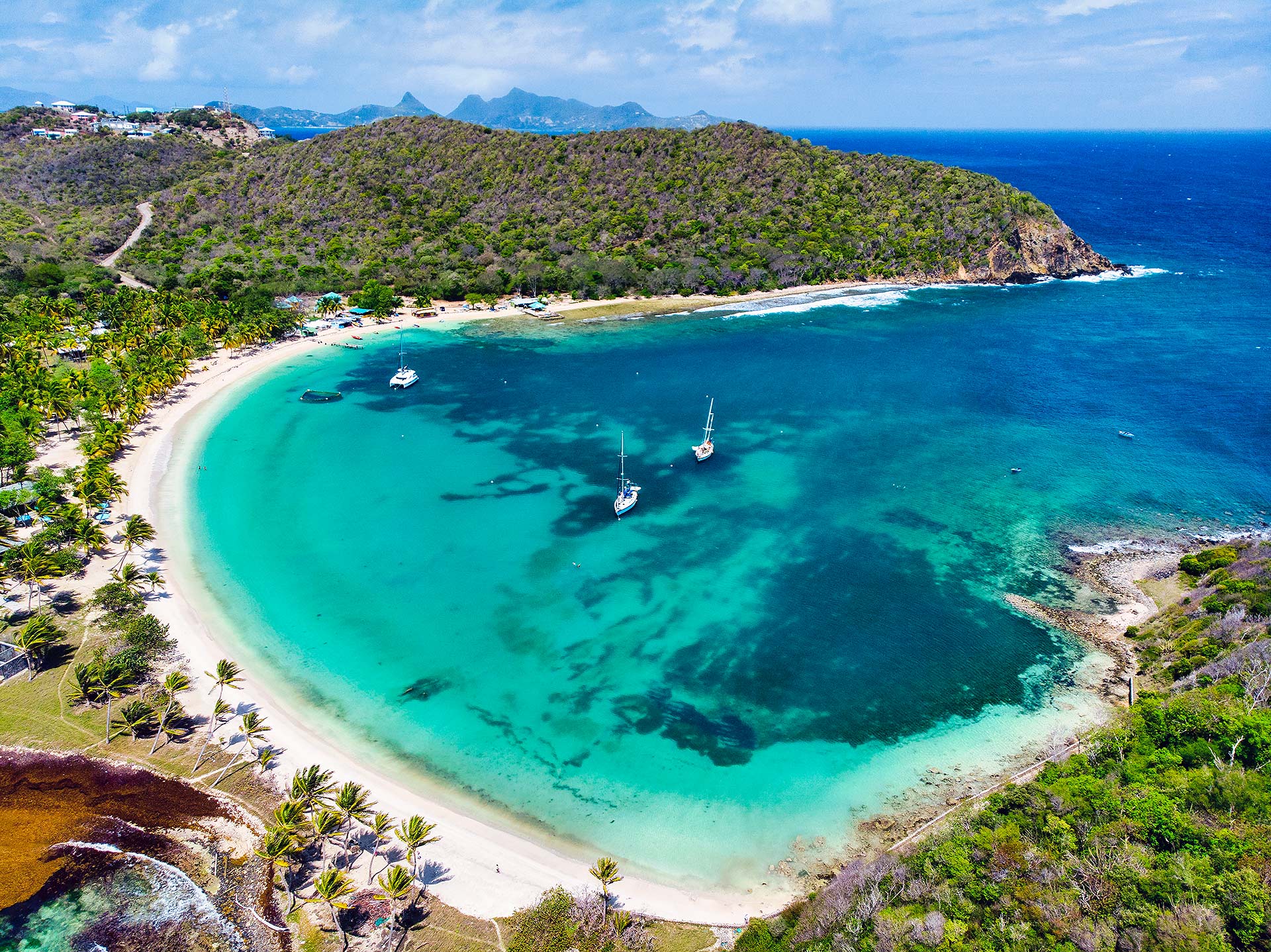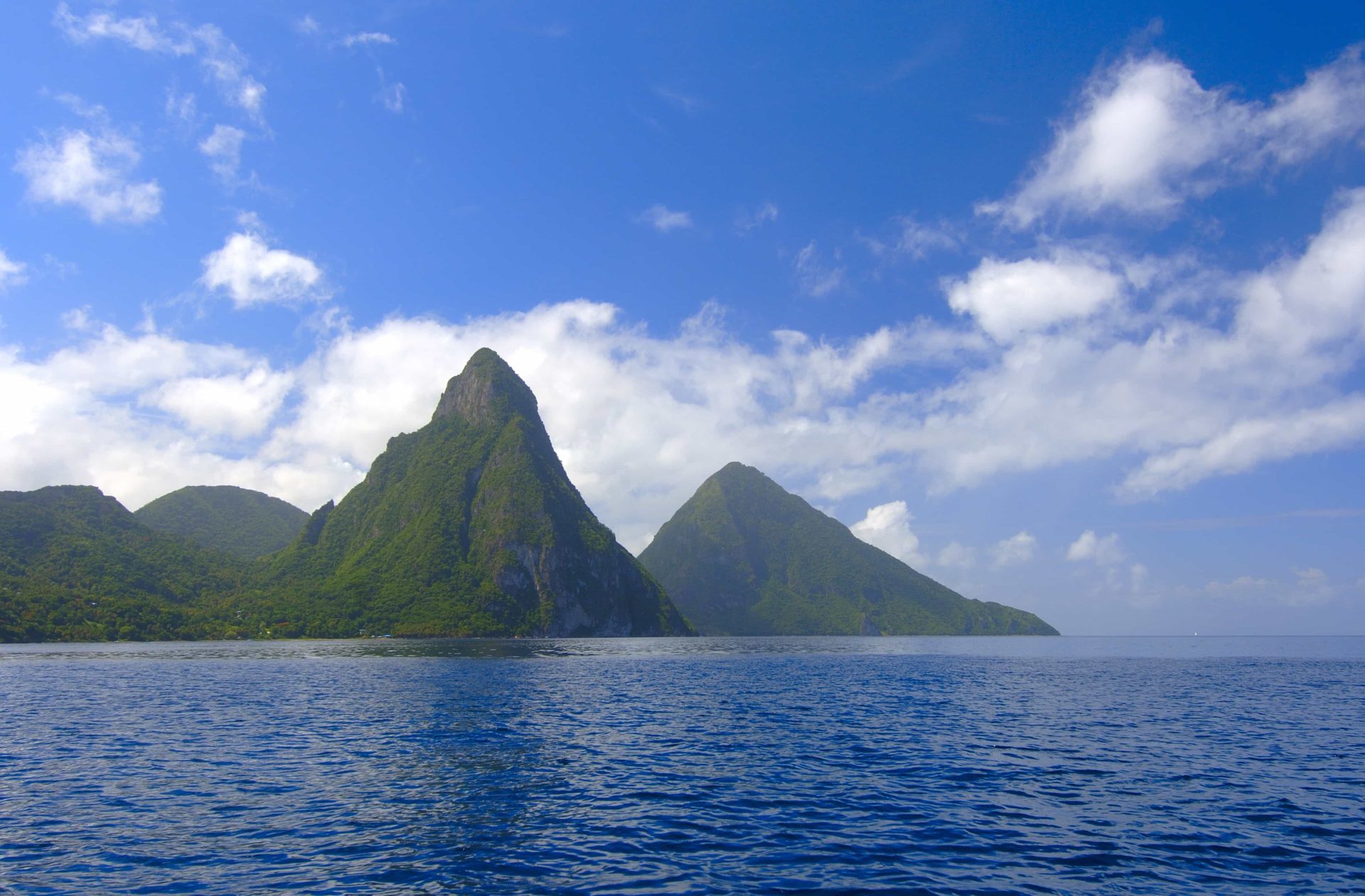Geographical Overview: Windward Islands

The Windward Islands are a group of islands in the Caribbean Sea, located to the east of the Greater Antilles and south of the Leeward Islands. They form the eastern boundary of the Caribbean Sea and are part of the Lesser Antilles, which stretch from the Virgin Islands in the north to Grenada in the south.
The Windward Islands are characterized by their volcanic origins and mountainous terrain. The islands were formed by the subduction of the Atlantic Plate beneath the Caribbean Plate, which caused the formation of volcanoes. Over time, these volcanoes eroded and formed the mountainous landscapes that are seen today. The highest peak in the Windward Islands is Mount Soufriere on the island of St. Vincent, which rises to 4,048 feet (1,234 meters) above sea level.
Climate
The Windward Islands have a tropical climate, with average temperatures ranging from 75 to 85 degrees Fahrenheit (24 to 29 degrees Celsius) throughout the year. The islands are also subject to trade winds, which help to keep temperatures moderate. The Windward Islands receive an average of 50 to 80 inches (127 to 203 centimeters) of rainfall per year, with most of the rain falling during the wet season, which runs from June to November.
Flora and Fauna
The Windward Islands are home to a wide variety of flora and fauna. The islands are covered in lush tropical forests, which are home to a variety of trees, shrubs, and flowers. The Windward Islands are also home to a variety of animals, including monkeys, iguanas, and snakes. The islands are also a popular destination for birdwatchers, as they are home to a variety of bird species, including parrots, hummingbirds, and pelicans.
Economic and Tourism Potential

The Windward Islands possess a unique blend of economic strengths and challenges. Tourism, agriculture, and fisheries are key industries that drive the region’s economy. The islands’ stunning natural beauty, rich cultural heritage, and diverse marine life offer immense tourism potential. However, sustainable development practices are crucial to preserve the islands’ fragile environment and unique cultural identity.
Tourism Potential, Windward islands
The Windward Islands boast pristine beaches, lush rainforests, and vibrant coral reefs, making them a paradise for nature enthusiasts and adventure seekers. The islands’ rich history and cultural traditions provide unique experiences for tourists, showcasing a blend of African, European, and indigenous influences. Opportunities for adventure and relaxation abound, from hiking and kayaking to diving and snorkeling.
- Natural Attractions: White-sand beaches, crystal-clear waters, towering mountains, and lush rainforests create a breathtaking landscape.
- Cultural Heritage: A vibrant mix of African, European, and indigenous influences is reflected in the islands’ music, dance, cuisine, and architecture.
- Adventure and Relaxation: Activities range from hiking and kayaking to diving and snorkeling, catering to both adventure enthusiasts and those seeking tranquility.
Sustainable Tourism Development
To ensure the long-term sustainability of the tourism industry, it is essential to implement responsible practices that preserve the islands’ environment and culture. This includes minimizing waste, promoting energy efficiency, and protecting natural habitats. Respect for local customs and traditions is also crucial to maintain the islands’ unique character.
- Environmental Protection: Minimizing waste, promoting energy efficiency, and protecting natural habitats are essential for preserving the islands’ pristine environment.
- Cultural Sensitivity: Respecting local customs and traditions ensures the preservation of the islands’ unique cultural identity.
- Community Involvement: Engaging local communities in tourism development ensures that the benefits are shared equitably.
The Windward Islands, a chain of islands in the Caribbean, are known for their beautiful beaches, lush rainforests, and diverse marine life. These islands are also home to a variety of unique weather patterns, including the trade winds. The trade winds are strong, steady winds that blow from the east and can reach speeds of up to 30 miles per hour.
These winds help to keep the islands cool and comfortable, and they also play a role in the formation of spaghetti models. Spaghetti models are computer models that are used to predict the path of tropical cyclones. These models are based on the idea that tropical cyclones are like pieces of spaghetti that are blown around by the wind.
By tracking the movement of the spaghetti models, meteorologists can get a better idea of where a tropical cyclone is likely to go.
The Windward Islands are a group of islands in the Caribbean Sea. They are located east of the Lesser Antilles and south of the Greater Antilles. The islands are known for their beautiful beaches, lush rainforests, and diverse cultures. Recently, the islands have been threatened by Tropical Storm Beryl.
To track the storm’s path, meteorologists are using tropical storm beryl spaghetti models. These models help predict the storm’s future movement and intensity. The Windward Islands are hoping that the storm will weaken before it reaches their shores.